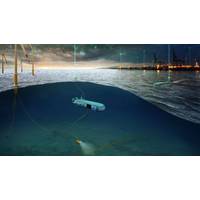
HonuWorx, ORE Catapult Working on Ridley - Subsea Mothership for Offshore Wind ROVs, AUVs
and remotely operated vehicles (ROVs) to offshore sites and release them directly under the water. "A successful outcome to the project will inform HonuWorx’ roadmap towards their highly disruptive Loggerhead concept, which will utilise an autonomous mothership as a mobile power and communications hub for ROVs and autonomous underwater vehicles (AUVs)," ORE Catapult said.ORE Catapult said that the project could resolve the remaining barriers to the adoption of subsea robotics by the offshore wind industry in terms of cost, carbon footprint, battery life at sea, and digital connectivity
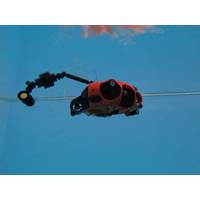
Subsea Tech's 'March of Miniaturization'
drone so fisherman know faster where fish are.But, Birdview see other opportunities, including dipping a modem to gather data from underwater sensors or even to provide a communications link to remote control ROVs or mobile underwater platforms, so they don’t have to stay within range of a communications hub.It’s now working on a system with a 50km single range with semi and fully automated missions. A challenge is data transfer – when away from the host vessel or communications networks, less data can be sent, so the drone’s communications systems have to be able to reduce the
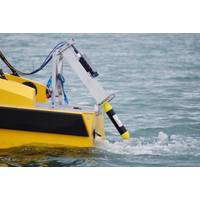
AUVs Launched and Recovered Autonomously
launched autonomously from three launch tubes mounted on the stern of an ASV C-Worker-5 unmanned surface vessel (USV). Missions can be sent to the AUVs while in their launch tubes via the C-Worker communications after which the system can operate autonomously. The C-Worker can then act as a communications hub downloading high resolution data from the ecoSUB for storage or onward transmission through high bandwidth channels before collecting the AUVs using a specially designed recovery system modeled on a Jason’s cradle. This combination of platforms means that ecoSUB can be delivered

Voices: Sean Halpin
conditions Today, this transformation is evident in the work companies are doing harvesting subsea data and reporting back in frequencies previously not feasible without autonomous systems. By sitting at the surface of the ocean at the air/sea interface, acting as a data collection and communications hub, Wave Gliders provide companies near real time access to high resolution, high-density data over time periods and coverage areas cost prohibitive with traditional vessels. This, in turn, enables better modeling and science ultimately resulting in a safer and more efficient oilfield.
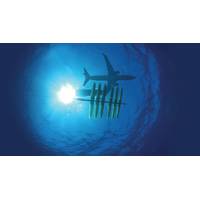
The Future of Unmanned Underwater Systems
Glider. It’s the world’s first wave and solar propelled, Unmanned Surface Vehicle (USV). What is important is we’re at the surface of the ocean. We are able to persistently collect and communicate data at the boundary between the sea and air. Think of us as the communications hub connecting the undersea world of acoustics to the world of air and radio. This is vitally important since, until now, there has not been a cost effective, long endurance, unmanned platform that can bridge undersea sensors or vessels to aerial, shore, or space systems. We describe this capability
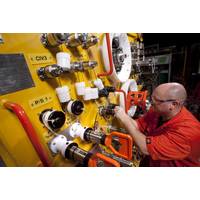
Proserv Scores Double Contract Wins
wells will be controlled at Noble Energy’s Gunflint field in the Mississippi Canyon area – around 70 miles from the Louisiana coast. Developed by Proserv’s flagship R&D technology hub in Trondheim, Norway, fiber optic communication systems using the company’s Open Communications Hub (OCH) technology will allow high-speed network communication from 6,100 ft below the surface. Proserv’s team of subsea controls experts in Great Yarmouth, U.K., will be responsible for the manufacturing of the seven subsea control modules for both developments, which will include the



 February 2024
February 2024





